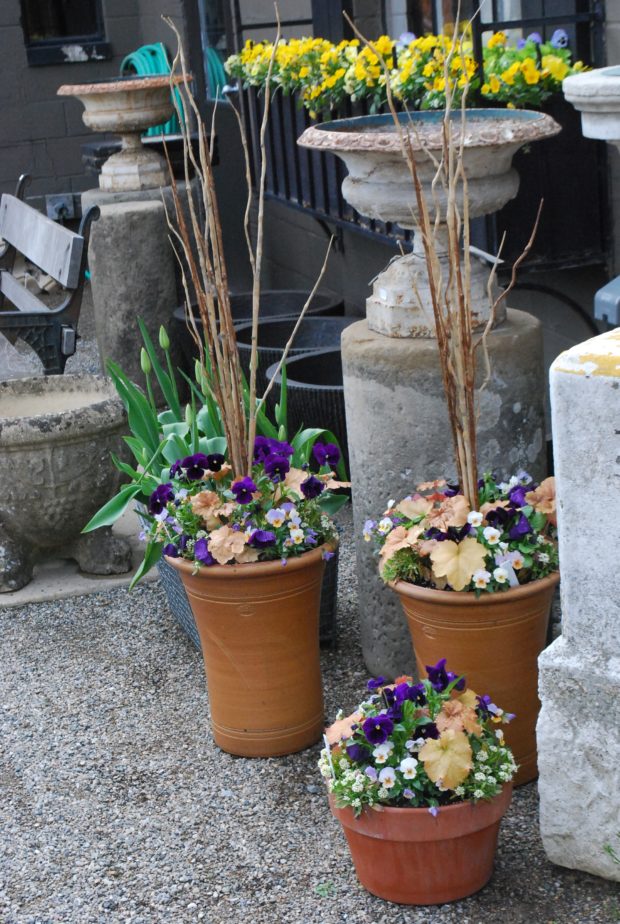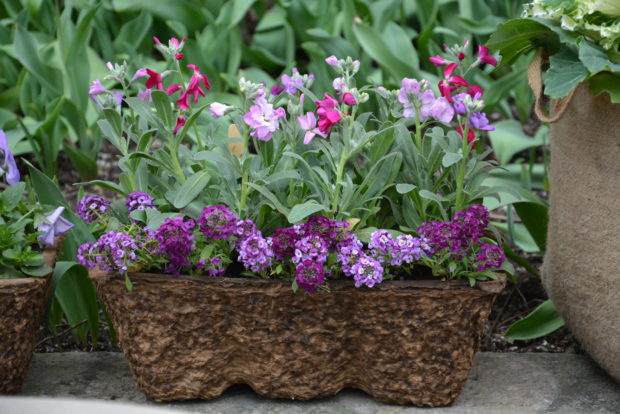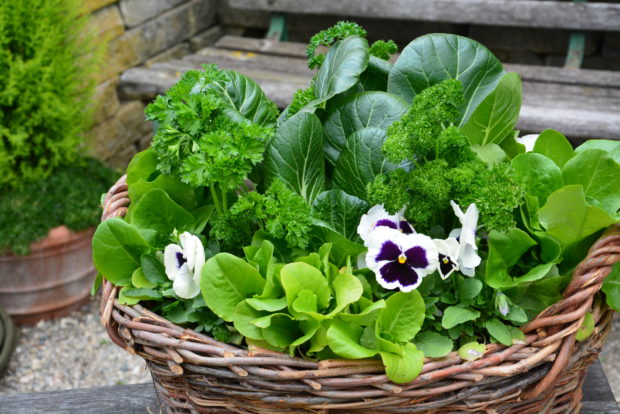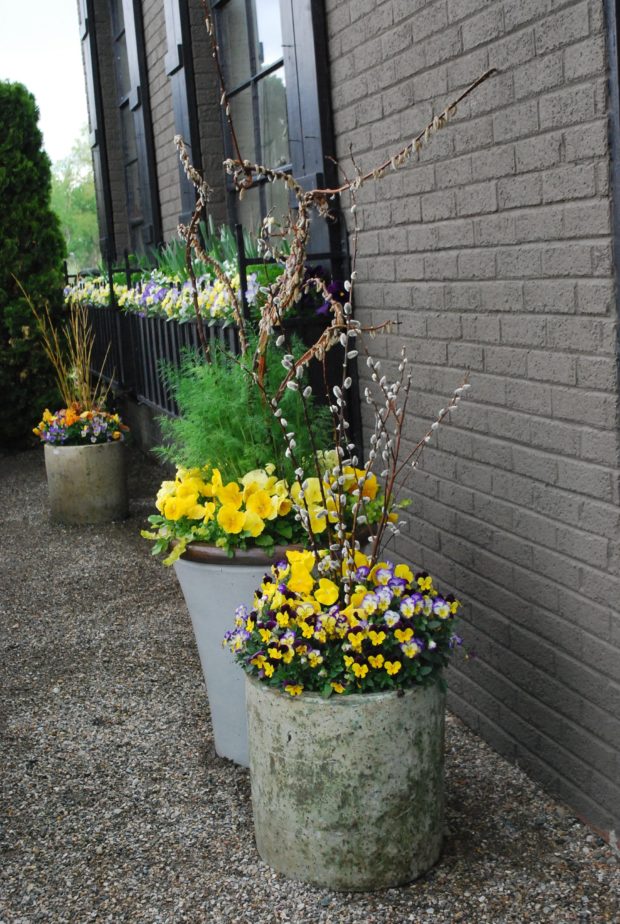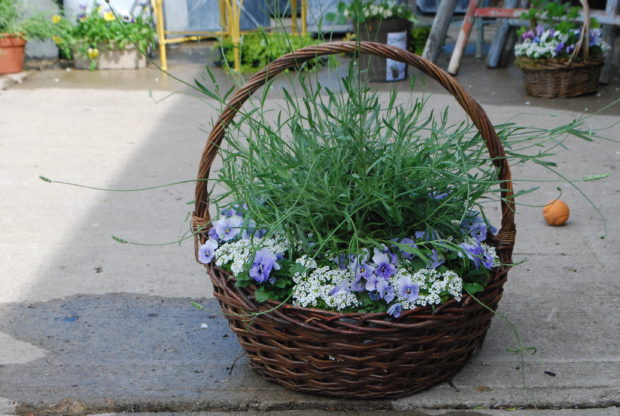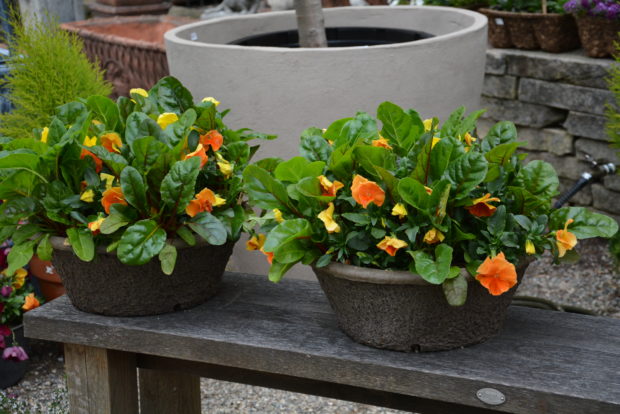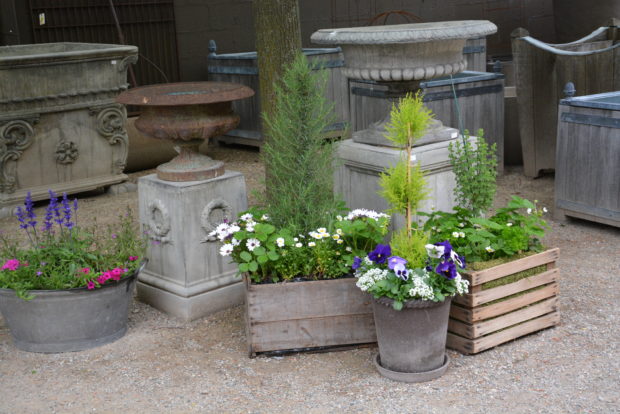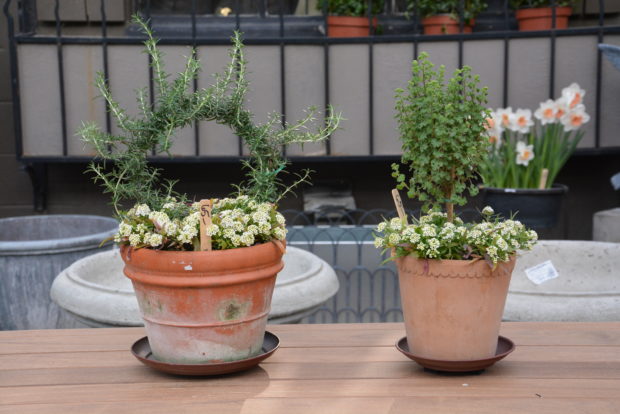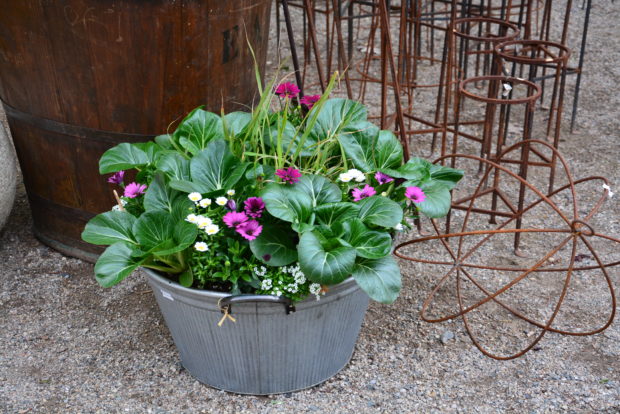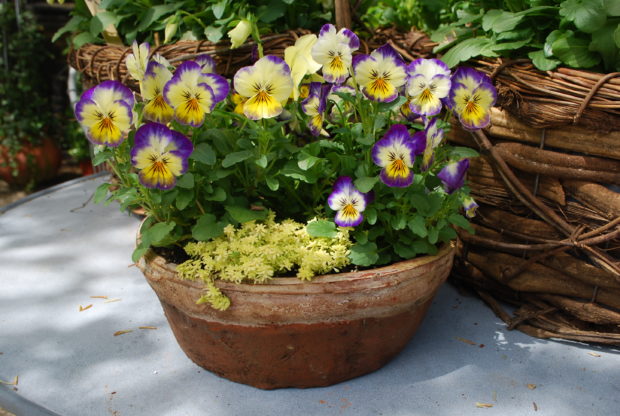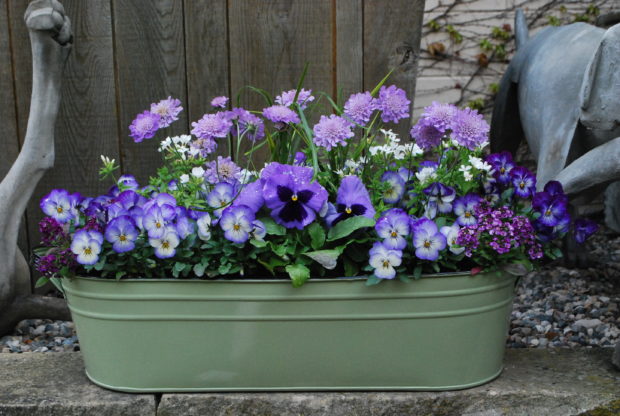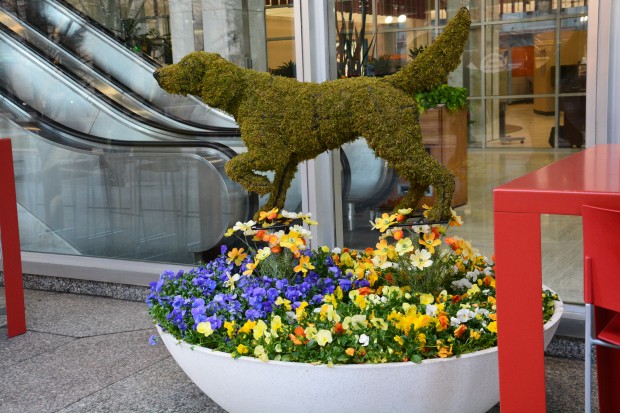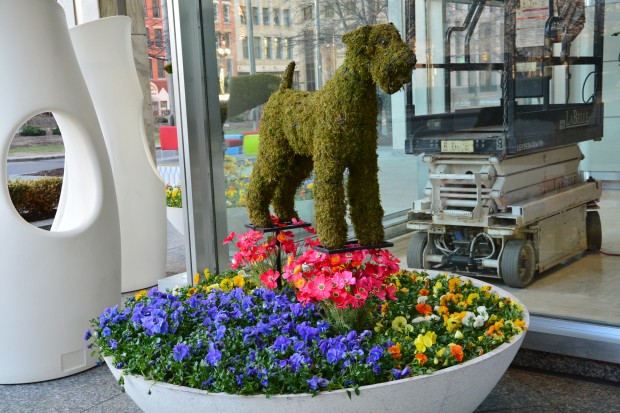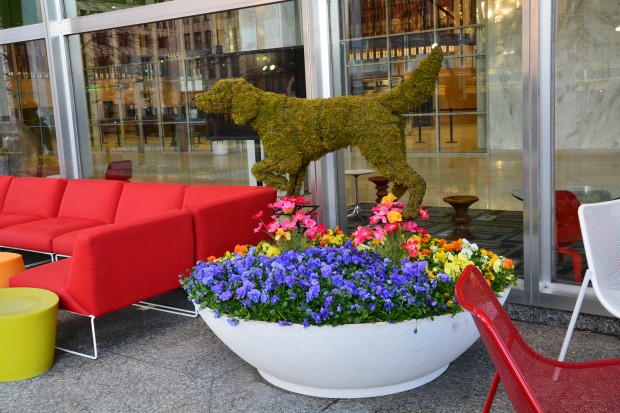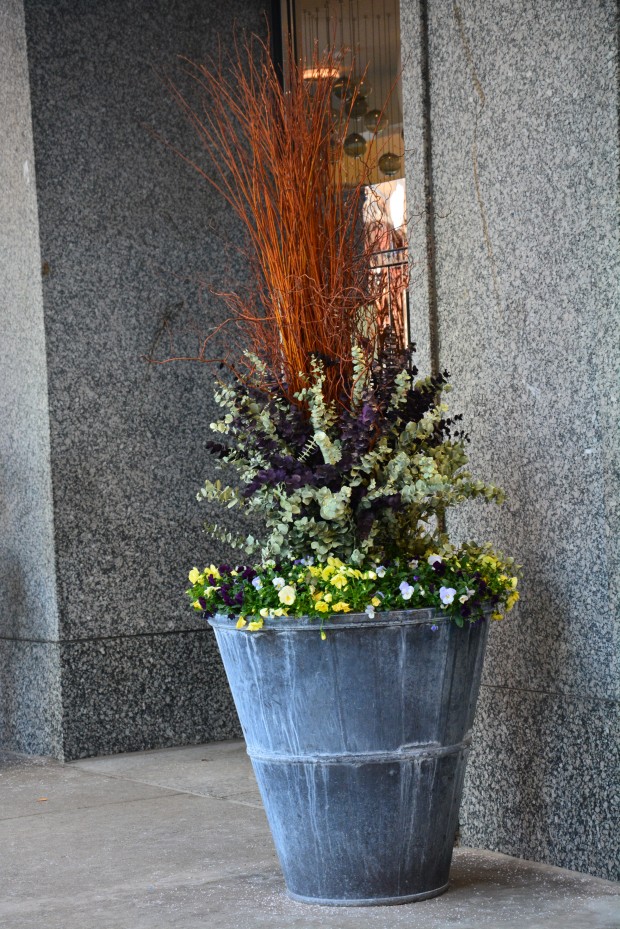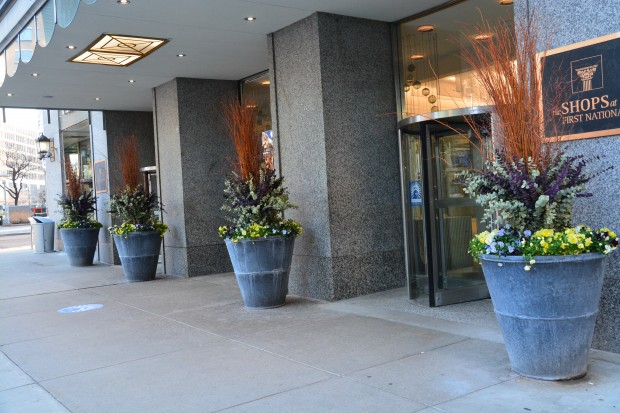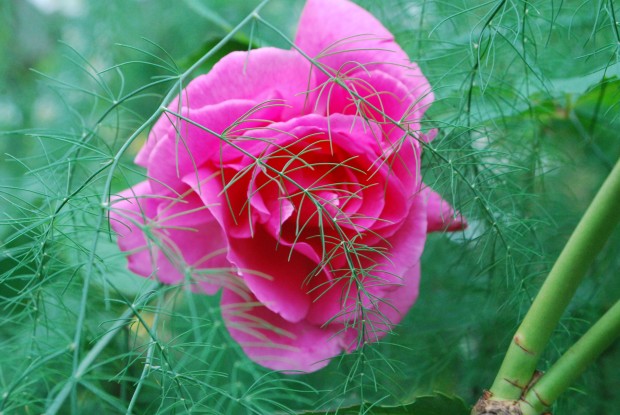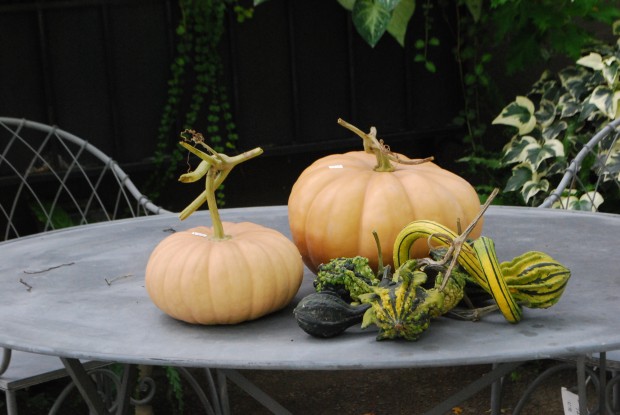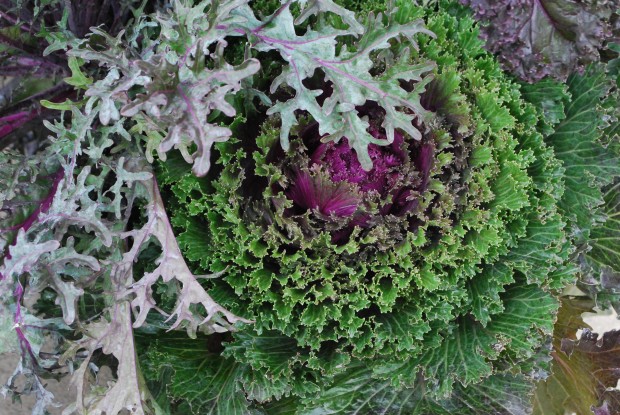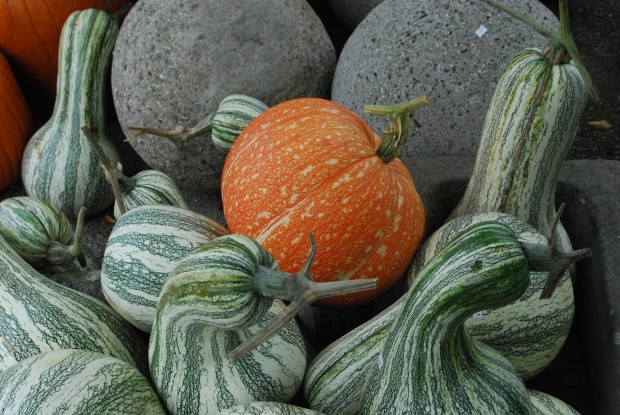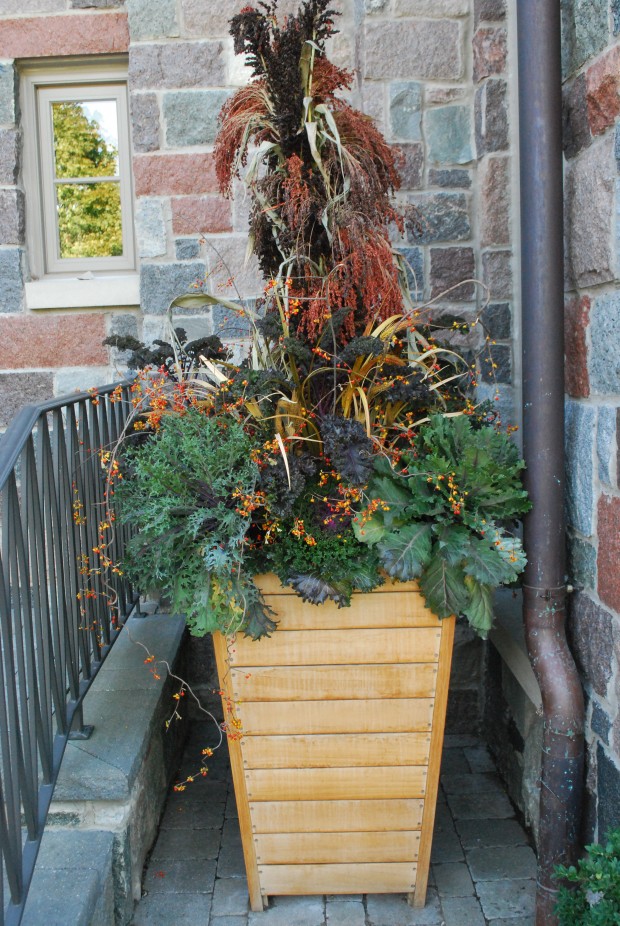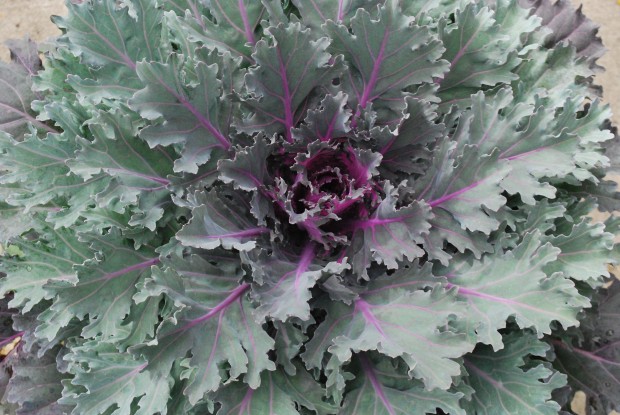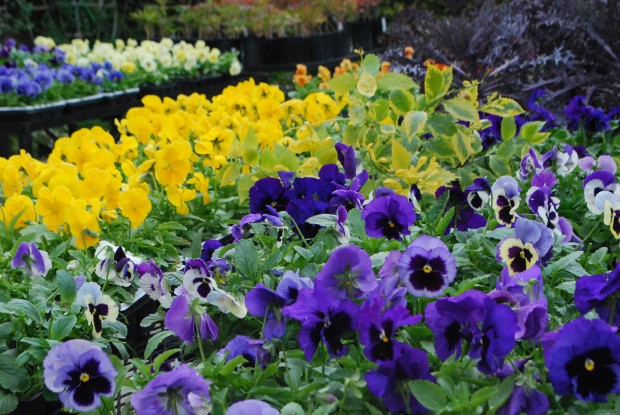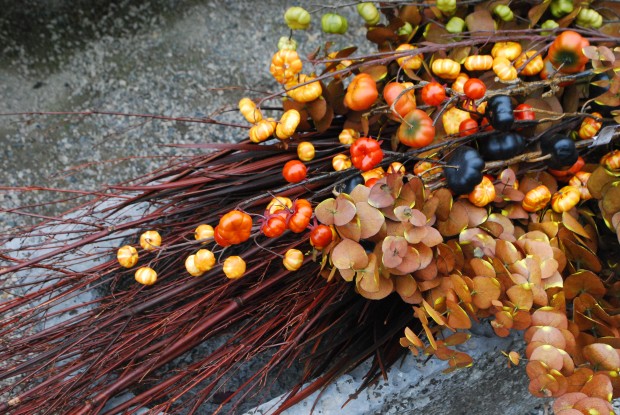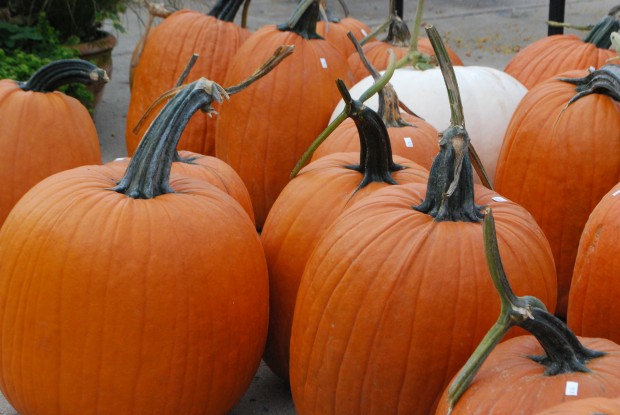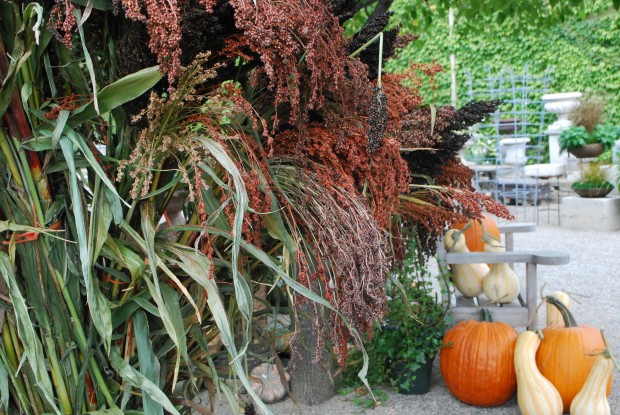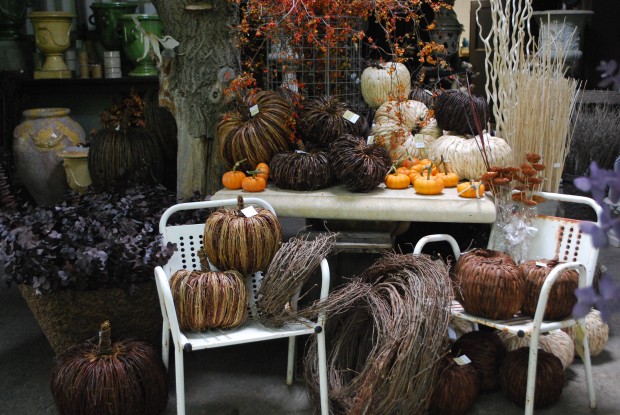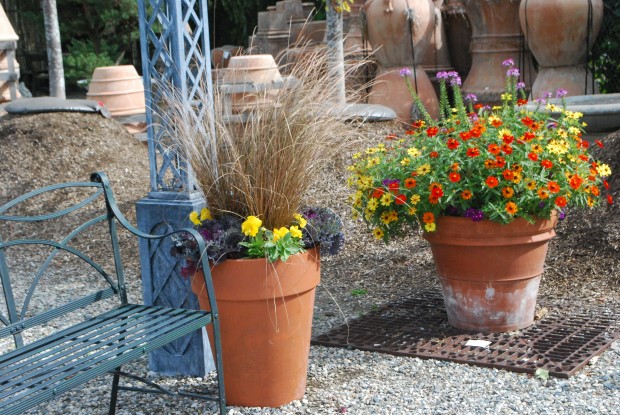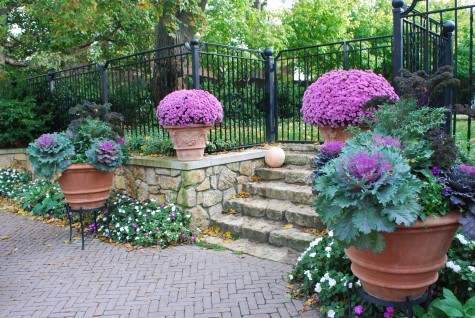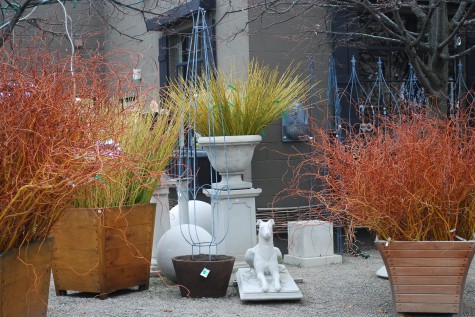 Planting containers for spring is a great idea. To follow are some of my favorites.
Planting containers for spring is a great idea. To follow are some of my favorites.
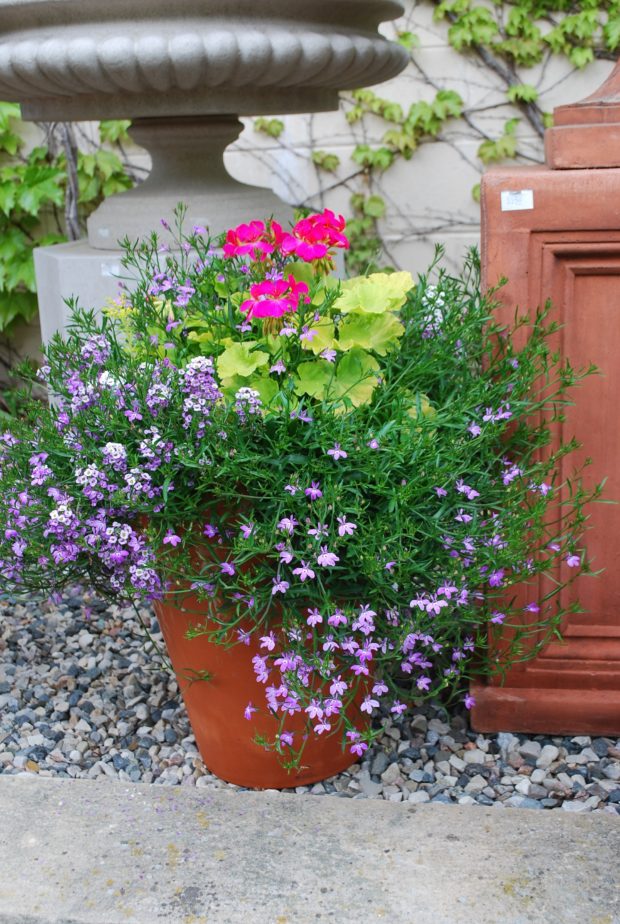 My recommendation for containers this 17th of May in Michigan? Do not be thinking coleus, New Guinea impatiens, begonias, licorice in any of its forms, sweet potato vine, cannas – the list of summer container tropical that do not tolerate cold soil is long. Annual plants that are greenhouse grown for summer containers will not like our cold soil, or the cold air. Refrain from planting these cold sensitive plants until the soil and the air temperatures warm up. Containers planted with spring and cold tolerant plants deliver every bit of three months, and will happily accompany your spring garden coming on. Choose to be in real time. The choices are many.
My recommendation for containers this 17th of May in Michigan? Do not be thinking coleus, New Guinea impatiens, begonias, licorice in any of its forms, sweet potato vine, cannas – the list of summer container tropical that do not tolerate cold soil is long. Annual plants that are greenhouse grown for summer containers will not like our cold soil, or the cold air. Refrain from planting these cold sensitive plants until the soil and the air temperatures warm up. Containers planted with spring and cold tolerant plants deliver every bit of three months, and will happily accompany your spring garden coming on. Choose to be in real time. The choices are many.
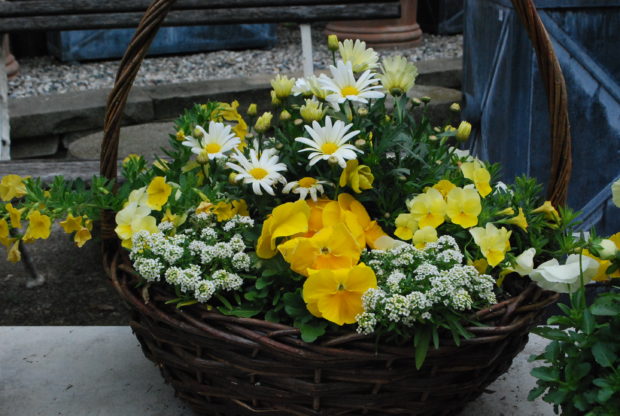 The tropical annuals that are greenhouse grown for summer containers are living in a warm world right now. Everything regarding their culture is right as rain. They have great soil. They have been fertilized. They are growing in a warm environment. Their place on a greenhouse bench is an ideal world. A greenhouse, on a sunny day in March, gets very warm, as in upwards of 80 degrees. Those sunny days in April push those plants with tropical origins into very active growth. A greenhouse crop of container plants is usually available for purchase way ahead of predictably warm weather outdoors. The transition from a hot house to your garden can be a huge shock to those plants. If you do not have a glass house to protect annual topical plants from the late spring Michigan weather, focus on what the spring has to offer.
The tropical annuals that are greenhouse grown for summer containers are living in a warm world right now. Everything regarding their culture is right as rain. They have great soil. They have been fertilized. They are growing in a warm environment. Their place on a greenhouse bench is an ideal world. A greenhouse, on a sunny day in March, gets very warm, as in upwards of 80 degrees. Those sunny days in April push those plants with tropical origins into very active growth. A greenhouse crop of container plants is usually available for purchase way ahead of predictably warm weather outdoors. The transition from a hot house to your garden can be a huge shock to those plants. If you do not have a glass house to protect annual topical plants from the late spring Michigan weather, focus on what the spring has to offer.
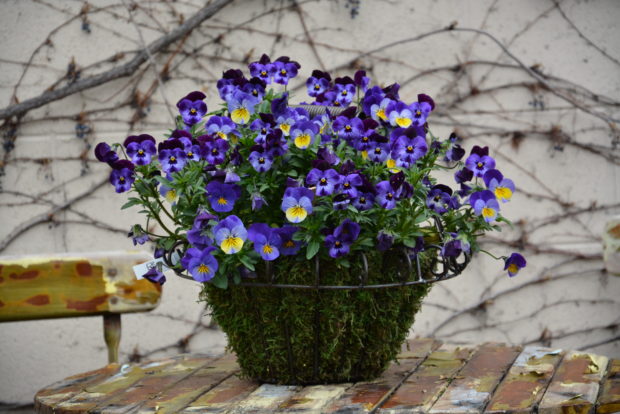 I understand the idea to shop now. Every serious gardener wants to purchase the best from a big collection. I would only suggest that your awesome early picks need to be, at the very least, housed in the garage until the night temperatures are reliably over 50 degrees. It can be heartbreaking, getting ahead of the weather. At this moment, I am trying to stay focused on all thing spring.
I understand the idea to shop now. Every serious gardener wants to purchase the best from a big collection. I would only suggest that your awesome early picks need to be, at the very least, housed in the garage until the night temperatures are reliably over 50 degrees. It can be heartbreaking, getting ahead of the weather. At this moment, I am trying to stay focused on all thing spring.
